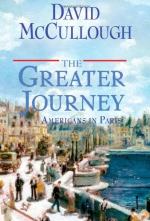
|
| Name: _________________________ | Period: ___________________ |
This test consists of 15 multiple choice questions and 5 short answer questions.
Multiple Choice Questions
1. What took place in April 1834 that allowed many medical students to see gunshot wounds and wounds caused by bayonets first hand?
(a) A Revolutionary War reenactment.
(b) An uprising among the poor.
(c) A civil war battle.
(d) A political protest.
2. Who was Richard Rush?
(a) A medical student.
(b) An American congressman.
(c) An artist.
(d) An American minister to Paris.
3. What two specialties did the Ecole de Medecine offer its students?
(a) Surgery and pediatrics.
(b) General medicine and geriatric medicine.
(c) Surgery and general medicine.
(d) Surgery and gynecology.
4. What language did Louis Napoleon Bonaparte prefer to speak when he did not want people to understand what he was saying?
(a) Russian.
(b) Italian.
(c) English.
(d) German.
5. What is Uncle Tom's Cabin?
(a) A book of short stories.
(b) A book of poetry.
(c) A nonfiction book about slavery.
(d) A fictional novel about slavery.
6. Who is Natty Bumppo?
(a) George Healy's uncle.
(b) Oliver Wendell Holmes' cousin.
(c) A character in several James Fenimore Cooper's novels.
(d) Samuel Morse's daughter.
7. What did his teacher, Pierre-Charles--Alexandre Louis, encourage James Jackson, Jr. to pursue in his medical education?
(a) Gynecology.
(b) Oncology.
(c) Pathological research.
(d) Surgery.
8. Who was the Marquis de Lafayette?
(a) A French aristocrat and American Revolutionary hero.
(b) A French theater star.
(c) Leader of the French government.
(d) Cousin to the French king.
9. What American was good friends with Louis Napoleon Bonaparte?
(a) Samuel Morse.
(b) James Fenimore Cooper.
(c) George Healy.
(d) Dr. Thomas Evans.
10. Who was Oliver Wendell Holmes?
(a) An artist.
(b) A historian.
(c) A judge.
(d) A writer.
11. Who was Louis Napoleon?
(a) The new king of France.
(b) The new president of the Republic.
(c) The new American minister.
(d) Cousin of King Louis-Phillipe.
12. What household pet was very popular among the French in 1830?
(a) Fish.
(b) Hamsters.
(c) Cats.
(d) Dogs.
13. Who was P.T.Barnum?
(a) A French artist.
(b) A French showman.
(c) A New York doctor.
(d) A New York showman.
14. Why did Oliver Wendell Holmes choose to travel to Paris in the 1830s?
(a) To join friends.
(b) To vacation.
(c) To learn from Parisian artists.
(d) To further his education.
15. What was thought to be a cause for the spread of diseases such as cholera?
(a) Eating outdoors.
(b) Under cooked food.
(c) A lack of proper hygiene and sanitation.
(d) Too many baths.
Short Answer Questions
1. Besides creating portraits, what other means of making money did Samuel Morse pursue before moving to Paris?
2. By what title was Louis Napoleon Bonaparte often referred?
3. What type of artist did George Healy long to be?
4. What did Louis Napoleon Bonaparte say was his power?
5. What American building did Pierre-Charles L'Enfant design?
|
This section contains 434 words (approx. 2 pages at 300 words per page) |

|




